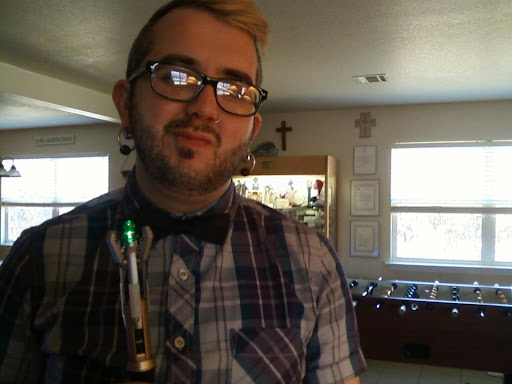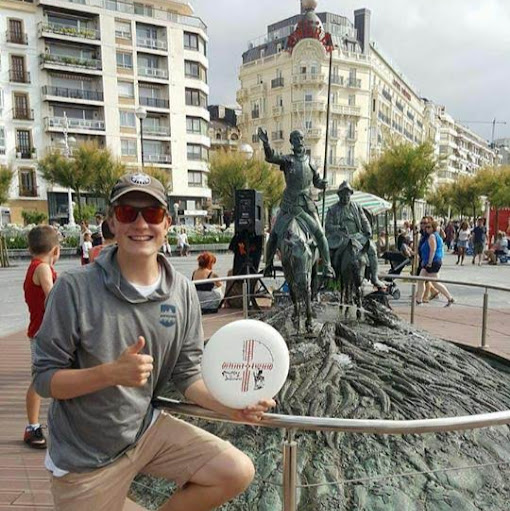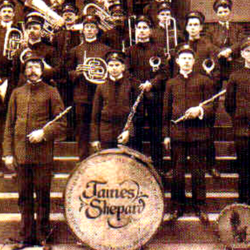James L Shepard
age ~49
from Bruneau, ID
- Also known as:
-
- James Lyle Shepard
- James L Shephard
- James Shepherd
James Shepard Phones & Addresses
- Bruneau, ID
- Mtn Home, ID
- Craig, CO
- Port Orchard, WA
- Rock Springs, WY
- New Castle, CO
- Mountain Home AFB, ID
- Wichita Falls, TX
Languages
English
Specialities
Social Work
Lawyers & Attorneys

James Shepard - Lawyer
view sourceSpecialties:
Administrative Law
Family
Government
Landlord & Tenant
General Practice
Landlord & Tenant
Family
Government
Landlord & Tenant
General Practice
Landlord & Tenant
ISLN:
919026115
Admitted:
2005
University:
Rutgers University, B.A., 1995
Law School:
University of Maryland, J.D., 2005

James Shepard - Lawyer
view sourceSpecialties:
Appellate Advocacy
Civil Litigation
Civil Litigation
ISLN:
1000243242
Admitted:
2015
University:
2017, West Virginia
Isbn (Books And Publications)

Mannerism and Baroque in 17th Century French Poetry: The Example of Tristan L'Hermite
view sourceAuthor
James Shepard
ISBN #
0807892734

Governor William Bradford and His Son Major William Bradford
view sourceAuthor
James Shepard
ISBN #
0832803049
Name / Title
Company / Classification
Phones & Addresses
Director
Reliable Dependable Transport, Inc
Principal
James Shepard Msw Licsw
Individual/Family Services
Individual/Family Services
12510 33 Ave NE, Seattle, WA 98125
2067696695
2067696695
President
FINNING PIPELINE HOLDINGS, INC
Managing
Duran Shepard, LLC
Chief Executive Officer, President
Typhoon Touch Technologies, Inc
Music & Broadcasting Services
Music & Broadcasting Services
1700 7 Ave, Seattle, WA 98101
Director, President, Secretary, Treasurer
Typhoon Ventures, Inc
Us Patents
-
Sodium Carbonate Recovery From Waste Streams And Impounded Sodium Carbonate Decahydrate Deposits
view source -
US Patent:7645435, Jan 12, 2010
-
Filed:Apr 26, 2004
-
Appl. No.:10/831859
-
Inventors:Victor E. Braman - Green River WY, US
Marco A. Cortes - Green River WY, US
Falcon A. Price - Green River WY, US
Stephen T. Gaddis - Green River WY, US
Todd M. Lessard - Green River WY, US
James M. Shepard - Wilmington DE, US
Derral W. Smith - Green River WY, US -
Assignee:General Chemical Industrial Products, Inc. - East Hanover NJ
-
International Classification:C01D 7/12
-
US Classification:423427, 4232062
-
Abstract:A process is described for recovering sodium carbonate or other sodium-based chemicals from sodium-bearing streams, including in particular mine water, evaporative pond water and sodium carbonate decahydrate deposits, recycle and purge streams, and other waste streams. In the process sodium bicarbonate-bearing streams are decarbonized to reduce the sodium bicarbonate concentration in a combination with other sodium-bearing streams, resulting in a liquor suitable as feed to a sodium carbonate decahydrate or sodium carbonate monohydrate process. The sodium bicarbonate stream is combined in a mix tank with other sodium carbonate bearing streams where the concentration is adjusted to form a liquor suitable to feed a sodium decahydrate or sodium carbonate monohydrate evaporation/crystallization step. In the process the combination of the various sodium-bearing streams is decarbonized to below 3. 5% sodium bicarbonate when fed to a sodium decahydrate process and to below 1% sodium bicarbonate when fed to a sodium carbonate monohydrate process.
-
Sodium Carbonate Recovery From Waste Streams And Impounded Sodium Carbonate Decahydrate Deposits
view source -
US Patent:20030143149, Jul 31, 2003
-
Filed:Jan 31, 2002
-
Appl. No.:10/061477
-
Inventors:Victor Braman - Green River WY, US
Marco Cortes - Green River WY, US
Falcon Price - Green River WY, US
Stephen Gaddis - Green River WY, US
Todd Lessard - Green River WY, US
James Shepard - Wilmington DE, US
Derral Smith - Green River WY, US -
International Classification:C01D007/00
-
US Classification:423/426000
-
Abstract:A process is described for recovering sodium carbonate or other sodium-based chemicals from sodium-bearing streams, including in particular mine water, evaporative pond water and sodium carbonate decahydrate deposits, recycle and purge streams, and other waste streams. In the process selected sodium bicarbonate-bearing streams are decarbonized to reduce the sodium bicarbonate concentration in a combination with other sodium-bearing streams, resulting in a liquor suitable as feed to a sodium carbonate decahydrate or sodium carbonate monohydrate process. The sodium bicarbonate concentration can be reduced using any number of known processes such as reacting said sodium bicarbonate with a neutralizing agent such as calcium oxide, calcium hydroxide, sodium hydroxide, or other alkali. Sodium bicarbonate can also be stripped using steam or air. The sodium bicarbonate reduced stream is combined with other sodium-bearing streams where the concentration is adjusted to form a liquor suitable to feed a sodium decahydrate or sodium carbonate monohydrate evaporation/crystallization step. Alternatively, the decarbonized stream can be concentrated using sodium carbonate decahydrate crystals formed from said sodium carbonate decahydrate process. Additionally, waste streams dilute in sodium carbonate concentration can be heated, especially with waste process heat, and recycled to existing sodium carbonate decahydrate deposits in evaporation ponds prior to combining said stream with other waste streams, purge streams, recycle streams, or sodium decahydrate crystals with the intention of recovering sodium carbonate from such streams and deposits and further processing the resulting liquor through an evaporation/crystallization step whereby various selected sodium carbonate salts are produced. The combination of the various sodium-bearing streams is decarbonized to below 3.5% sodium bicarbonate when fed to a sodium decahydrate process and to below 1% sodium bicarbonate when fed to a sodium carbonate monhydrate process. The feed streams are adjusted in sodium carbonate concentration by higher concentrated sodium carbonate-bearing streams or by addition of sodium carbonate decahydrate produced from said streams or recovered form evaporation pond deposits, are then processed to produce sodium carbonate decahydrate or sodium carbonate monohydrate or further processed to form other sodium carbonate salts.
License Records
James W Shepard
License #:
NA03952 - Expired
Category:
Nursing Assistant
Issued Date:
Dec 15, 1990
Expiration Date:
Jun 30, 2002
Type:
Nursing Assistant
Vehicle Records
-
James Shepard
view source -
Address:404 Tindall Ave, Mountain Home, ID 83647
-
Phone:2085873370
-
VIN:4YMUL12167M037316
-
Make:BMW
-
Model:X5-Series AWD 4dr 4.8i
-
Year:2007
Medicine Doctors

James W. Shepard
view sourceSpecialties:
Internal Medicine
Work:
Penn Presbyterian Internal Medicine
3801 Filbert St STE 212, Philadelphia, PA 19104
2156628978 (phone), 2156625940 (fax)
Philadelphia District Health Center 2
1930 S Broad St UNIT 14, Philadelphia, PA 19145
2156851800 (phone), 2156831815 (fax)
3801 Filbert St STE 212, Philadelphia, PA 19104
2156628978 (phone), 2156625940 (fax)
Philadelphia District Health Center 2
1930 S Broad St UNIT 14, Philadelphia, PA 19145
2156851800 (phone), 2156831815 (fax)
Education:
Medical School
Temple University School of Medicine
Graduated: 1976
Temple University School of Medicine
Graduated: 1976
Procedures:
Arthrocentesis
Electrocardiogram (EKG or ECG)
Hearing Evaluation
Vaccine Administration
Electrocardiogram (EKG or ECG)
Hearing Evaluation
Vaccine Administration
Conditions:
Anemia
Anxiety Phobic Disorders
Bipolar Disorder
Cardiac Arrhythmia
Cardiomyopathy
Anxiety Phobic Disorders
Bipolar Disorder
Cardiac Arrhythmia
Cardiomyopathy
Languages:
English
Spanish
Tagalog
Spanish
Tagalog
Description:
Dr. Shepard graduated from the Temple University School of Medicine in 1976. He works in Philadelphia, PA and 1 other location and specializes in Internal Medicine. Dr. Shepard is affiliated with Hospital Of The University Of Pennsylvania, Thomas Jefferson University Hospital and Thomas Jefferson University Hospitals Methodist.

James Shepard, Seattle WA - MSW (Master of Social Work)
view sourceSpecialties:
Social Work
Address:
1660 S Columbian Way Suite S-182-Sw, Seattle, WA 98108
2062773664 (Phone)
2062773664 (Phone)
Languages:
English
Plaxo

James Shepard
view sourceRetired
Classmates

James Shepard
view sourceSchools:
Washington High School Blakely GA 1966-1970
Community:
Lorene Stamper, Cleam Salter, Simmie Gray, Julius Francis

James Shepard
view sourceSchools:
Phenix High School Hampton VA 1963-1967
Community:
Priscilla Wilson, Charmane Duncan, Nathaniel Carter, Everett Hollins

James Shepard
view sourceSchools:
Elwood Community/Willkie High School Elwood IN 1974-1978
Community:
Dennis Faulstich

James Shepard
view sourceSchools:
Bullock County High School Union Springs AL 1996-2000
Community:
William Tolliver, Robert Williams

James Shepard
view sourceSchools:
Ault High School Ault CO 1947-1951
Community:
Marvin Archuleta, Janice Ewald, Rogers Hoover

James Shepard
view sourceSchools:
Auburndale High School Memphis TN 1979-1983
Community:
Whit Agee, Robert Cruthirds

James Shepard
view sourceSchools:
Auburndale High School Memphis TN 1979-1983
Community:
Whit Agee, Robert Cruthirds

James Shepard
view sourceSchools:
Sacred Heart High School Kingston MA 1992-1996
Community:
Michelle Lockwood

James Shepard
view source
James L. Shepard
view source
James Gavin Shepard
view source
James Shepard Jr
view source
James E Shepard
view source
Derek James Shepard
view source
James Shepard Sr.
view source
James Shepard Sr.
view sourceGoogleplus

James Shepard
Work:
All American Fire Systems - Sprinkler Trainee
Education:
Bixby High School - Book Learnin
About:
I'm Jimmy. Gonna give this blog nonsense a go....
Tagline:
Trust me...I'm a doctor

James Shepard
Work:
Camp Tecumseh YMCA
Education:
Colorado College
Tagline:
What are you gonna do about it?

James Shepard
Work:
Jay Shepard Transportation - Owner

James Shepard
Education:
West Side HS - Auto- Mech

James Shepard

James Shepard

James Shepard

James Shepard
Youtube
Myspace

James Shepard
view sourceFlickr
Get Report for James L Shepard from Bruneau, ID, age ~49




















